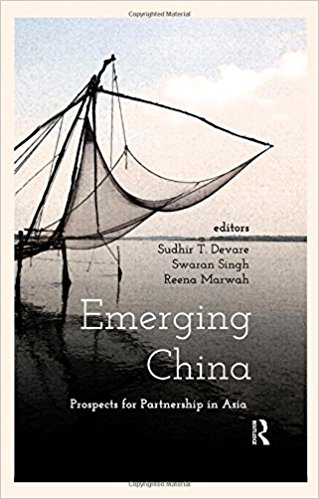Emerging China: Prospects for Partnership in Asia analyses and assesses the rise of China and its impact on Asia’s politics and economy, from the perspective of scholars from various countries—especially India. The book is, accordingly, divided into three sections—Asian Multilateralism, Engaging China, and China-India Equations.
The first section deals with the issue of ASEAN’s relevance and its centrality, China’s preeminent position in the Asian regional order and a possible role for India. Aileen S.P. Baveria, Meidyatama Suryodiningrat and Ong Keng Yong argue that there can be two views with regard to the ASEAN’s ability to play an effective role in actual regional conflict situations and in facilitating community-building in South East Asia. It, however, remains central to the regional order. It is the nodal point for outside powers’ engagement with the region; apart from initiating various multilateral processes in the region. As a response to China’s rise, ASEAN’s hedging policy of welcoming various countervailing great and middle powers from outside the region will ensure that ASEAN remains the forum in the region where outsiders will engage each other. It is in this context that Indonesia, as Meidyatama argues, looks to India assuming greater responsibilities in various ASEAN processes, though it is unsure about India’s own willingness to do so. D.S. Rajan spells out the differences between Indian and Chinese positions on various issues such as multilateralism and the US role in the region.

